
Pavement Failures
Before using steel fibre reinforced concrete for new pavements, several failed pavements (conventionally reinforced and fibre) were carefully reviewed.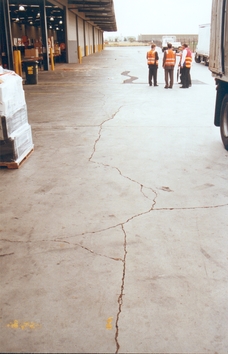 |
Extensive cracking with random
patterns. Repairs using asphalt are visible. |
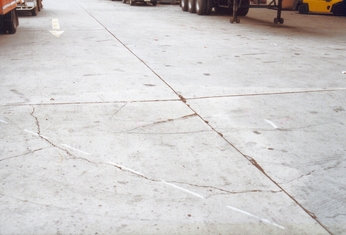 |
Crack pattern at intersection of slab joints. The slab "cantilevers" due to high point loads from heavy vehicle tyres hence the circular crack patterns around the corner. Finite element modelling of this slab indicated the circular cracks would occur at approximately 600 mm intervals. They were typically measured at 500 mm to 800 mm intervals. |
 |
The A4 notebook shows the magnitude of differential
settlement. Some cracks were measured as having more than 50 mm differential settlement. |
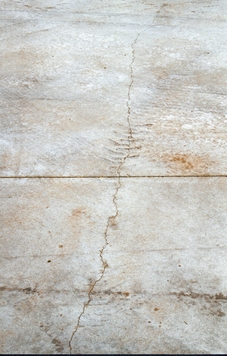 |
The crack continues through a saw-cut joint. Had the saw-cut joint been activated, that is, cracked and allowed the slab to behave as two independent slabs, the random crack shown here would not have propagated across the saw-cut joint. |
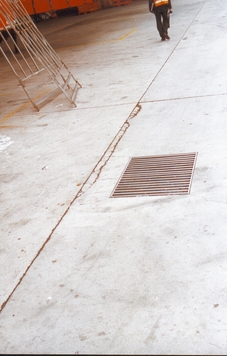 |
Crack alongside the joint indicates joint failure. This is usually due to settlement of one slab. The dowels in the joint are attempting to transfer loads across the joint, however due to the magnitude of settlement the dowels force the concrete to crack. Note: settlement problems are common around drainage pits due to inadequate compaction of backfill and water leaking into the sub-grade. |
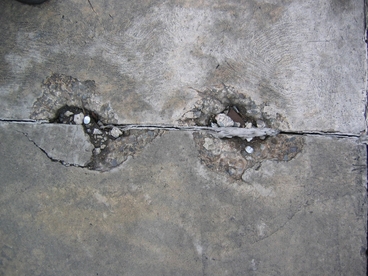 |
Dowels side by side have failed. Loads being transferred were excessive and there has been excessive differential movement. |
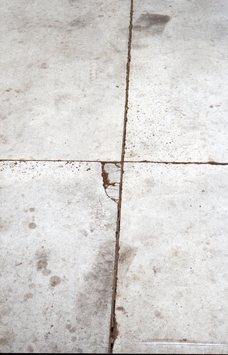 |
The joint sealant has failed. Gaps are visible towards the bottom of this image. The gaps indicate the elastic joint sealant has failed and allow rain water through to the sub-base and sub-grade. This enables fine particles to be transported and undermines the ground support being provided to the slab. The cracked corner is a typical sign of differential movement whenever a point load (heavy wheel) moves across the joint. |
 |
Cracks emanating from corners of the pit. Note also the gap between the slab and pit wall. This can be seen through the bars to the pit lid. This allows water to freely enter the underlying soils and transport fines. |
What we learned
Pavements fail when they crack and become unserviceable due to:
- Applied loads exceeding the design parameters
- Prescriptive design approaches don't properly consider materials and load cases
- Inadequate understanding of existing unmodified sub-grade conditions. This is especially relevant for clayey soils.
- Poor preparation of the sub-base (layer immediately under the slab)
- Poor concrete placement conditions, especially with reference to weather conditions
- Poor detailing and poor implementation of details on site
- Lack of joint sealing (particularly externally)
Disclaimer: Information in this website is provided for information only. There is no implied warranty
or claim to being "fit for purpose" and suitable for design. Anyone using the information does so entirely
at their risk and should satisfy themselves as to the veracity of the application.
This website and all the content contained therein is copyright ©
2025 protected.
Projects